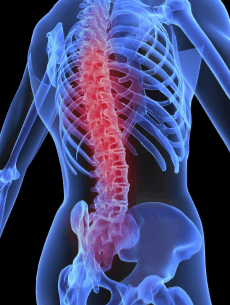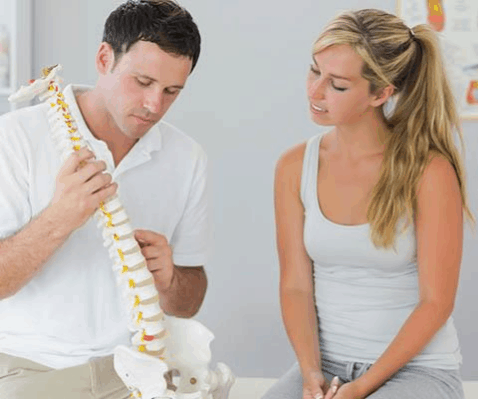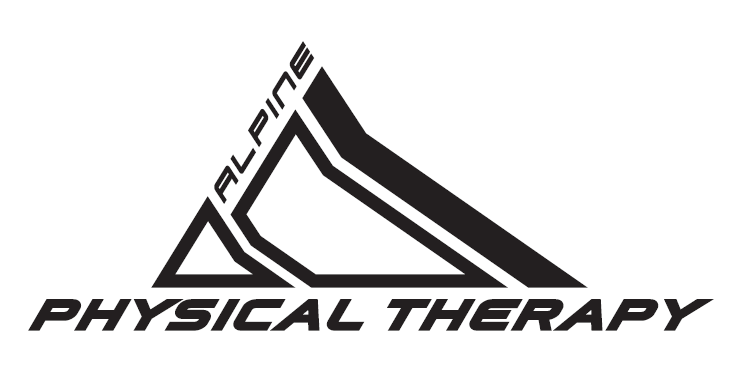
What is Low Back Pain?
Low back pain is a very common medical condition. Typically it affects the lumbar region, the part of the back below the rib cage, causing varying degrees of pain or discomfort. Lower back pain is considered acute or chronic based on its cause and the time scale of noticeable painful symptoms. Acute back pain is defined as any back pain that lasts only a few days or weeks, usually resolving on its own with self-care and resulting in no sustaining loss of function. Chronic back pain is determined by back pain that is present for 12 weeks or longer and does not resolve without professional care.
Who is at Risk for Low Back Pain?
Low back pain is less common in people younger than 30. The chance of having lower back problems and pain increases with age. Compounding risk factors include being overweight, sedentary, or having a job in which heavy lifting is required.
Symptoms of Low Back Pain
Symptoms of low back pain vary in type and intensity during different daily situations. Here are some examples of commonly experienced lower back pain symptoms:
- Dull or achy pain contained to the lower back below the rib cage
- Shooting or stinging pain that travels from the low back into the lower legs or feet—sometimes causing numbness or tingling known as sciatica.
- Tightness and loss of range of motion in the low back, pelvis, and hips
- Painful muscle spasms
- Any pain that worsens during prolonged sitting or standing
- Being unable to maintain proper posture
- Difficulty standing up from lying or sitting positions.

*Note: If you are experiencing back pain after a fall or injury, have loss of bowel or bladder control, severe and continual pain in the abdomen, pain when coughing or urinating, fever and chills, unexplained weight loss, numbness in the groin area, or leg weakness see or contact your doctor immediately. Other related extenuating conditions warrant contacting your doctor immediately if you are experiencing back pain, these are a history of cancer, history of drug use, long-term steroid use, weak immune system, or pain that worsens with rest.
Causes of Low Back Pain
The causes of low back pain are many. They range from daily lifestyle choices to serious diseases. However, there are some commonalities found between those who suffer from pain in the lower back.
Daily Activities. While it may seem unlikely, there are many smaller factors that contribute to low back pain. Bad posture, carrying a heavy bag, slouching in an uncomfortable chair at work, sleeping in an unsupportive bed, and overextending muscles during a workout or a day of golf can all cause strain on the low back over time.
Muscle Tightness or Weakness. Tight or weak muscles can cause unnecessary strain on the lower back. Common culprits include tight hamstrings or a weak core.
Injuries. Heavy use of muscles can cause sprains and strains as well as painful muscle spasms. Traumatic injuries are also common factors of low back pain. Sports injuries, falls, car accidents, etc. can damage tendons, ligaments, and muscles—even compressing the spine causing discs to herniate or rupture.
Age. As the body moves through the aging process, certain systems within it begin to degenerate. Discs in the spine lose their ability to cushion and general degradation of the joints and bones around the spine occurs after years of wear and tear. Alongside this, certain diseases linked to age, such as arthritis and spondylitis, make further complications.
Genetic Conditions. Low back pain can be caused by genetic spinal conditions like scoliosis, lordosis, kyphosis, and other skeletal irregularities. Other conditions like Spina bifida create problems due to the underdevelopment of the spine.
Other Causes: Chronic Conditions
There are many chronic conditions that can cause low back pain. These include both spine and non-spine related causes. Some examples of these are:
- Spinal stenosis: when the space around the spinal cord narrows, sometimes causing pressure on the spinal nerves.
- Fibromyalgia: widespread muscle aches and fatigue.
- Cauda equina syndrome: when a ruptured disc pushes into the spinal canal and puts pressure on the bundle of sacral and lumbar nerve roots.
- Herniated or ruptured discs: when a disc in the spinal column protrudes outward pressing on and pinching surrounding spinal nerves.
- Kidney stones: often felt as a sharp pain in the lower back on one side.
- Tumors: abnormal growth of tissue that presses on or destroys the spine and nerves in the low back.
- Osteomyelitis: infections that involve the spine.
Treatments for Low Back Pain
Back pain will usually resolve itself on its own, but in the event that it does not, home care is an option. A home care regimen involves:
- Resting. It is recommended to rest for 48 hours after an injury or noticing significant pain. When pain and spasms subside, getting up and moving can help ease pain and stiffness.
- Icing and heating. Applying ice or heat directly to the source of the lower back pain for 15 to 20 minutes can reduce pain as well as decrease swelling and inflammation. Heating pads and ice packs are both viable options.
- Pain relievers. Over-the-counter medications can assist in easing low back pain. A doctor should always be consulted when taking new medications.
- Exercise. Light stretching can relieve pain when it first starts. When pain resides, performing exercises to increase core strength can improve lower back pain.
If lower back pain does not improve after home care a doctor should be consulted. To best diagnose the source of low back pain, a doctor needs specific details describing the type of pain, when it began, symptoms, and medical history of related chronic conditions. Uncommonly, X-rays, CT, or MRI scans may be needed before treatment. A doctor will often refer patients to a licensed physical therapist if they are not suffering from a serious illness or injury.
Physical Therapy for Low Back Pain

Physical therapy is a type of medical care practiced by licensed health professionals. It focuses on easing pain and returning patients to normal healthy functions as well as helping them move and live better. A physical therapist will treat low back pain using a deductive system to find the source of the pain, targeting treatment on fixing the dysfunction that is causing it. Treatment by a physical therapist can achieve the following for low back pain:
- Relieve pain in the lower back without opioids.
- Fix dysfunctional movements that cause pain and problems.
- Prevent or recover from a lower back injury.
- Prevent low back disability or surgery.
- Return the patient back to normal activity.
- Improve back stability and balance.
- Teach the proper skills and knowledge needed to prevent future low back pain.
What to Expect
Physical therapists care for patients in all stages of healing and recovery from the initial diagnosis to the end of rehabilitation. Patients are given physical evaluations using specific testing procedures. These tests usually involve posture, movement, balance, flexibility, and stability related to muscle and joint performance. Along with a patient’s related medical history, these tests are used to make a proper medical diagnosis and a plan for care with short and long term goals. Over the course of several appointments, physical therapists will administer applicable treatment and intervention to their patient until they are back to normal and healthy function. Self-care strategies and home exercises will also be taught during this time to keep the patient from regressing after their recovery and end of treatment.
More Information
If you have more questions or concerns about your low back pain, give Alpine Physical Therapy a call at 801-216-4298.
Sources:
https://www.spine-health.com/conditions/lower-back-pain/causes-lower-back-pain
https://www.ninds.nih.gov/DISORDERS/PATIENT-CAREGIVER-EDUCATION/FACT-SHEETS/LOW-BACK-PAIN-FACT-SHEET
https://www.healthline.com/health/low-back-pain-acute#causes
https://medlineplus.gov/spinalcorddiseases.html
https://www.healthline.com/health/ruptured-disc
https://www.webmd.com/back-pain/ss/slideshow-surprising-reasons-back-pain
https://www.webmd.com/back-pain/features/back-pain-at-home#2
https://www.webmd.com/pain-management/what-is-physical-therapy#1
https://www.medicalnewstoday.com/articles/160645#what_to_expect_during_physical_therapy
